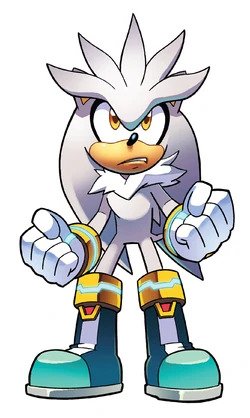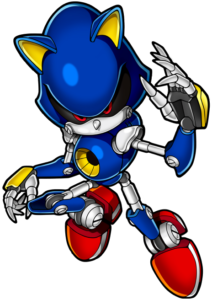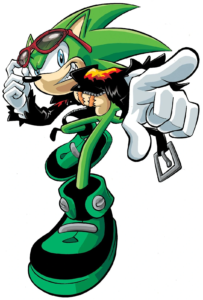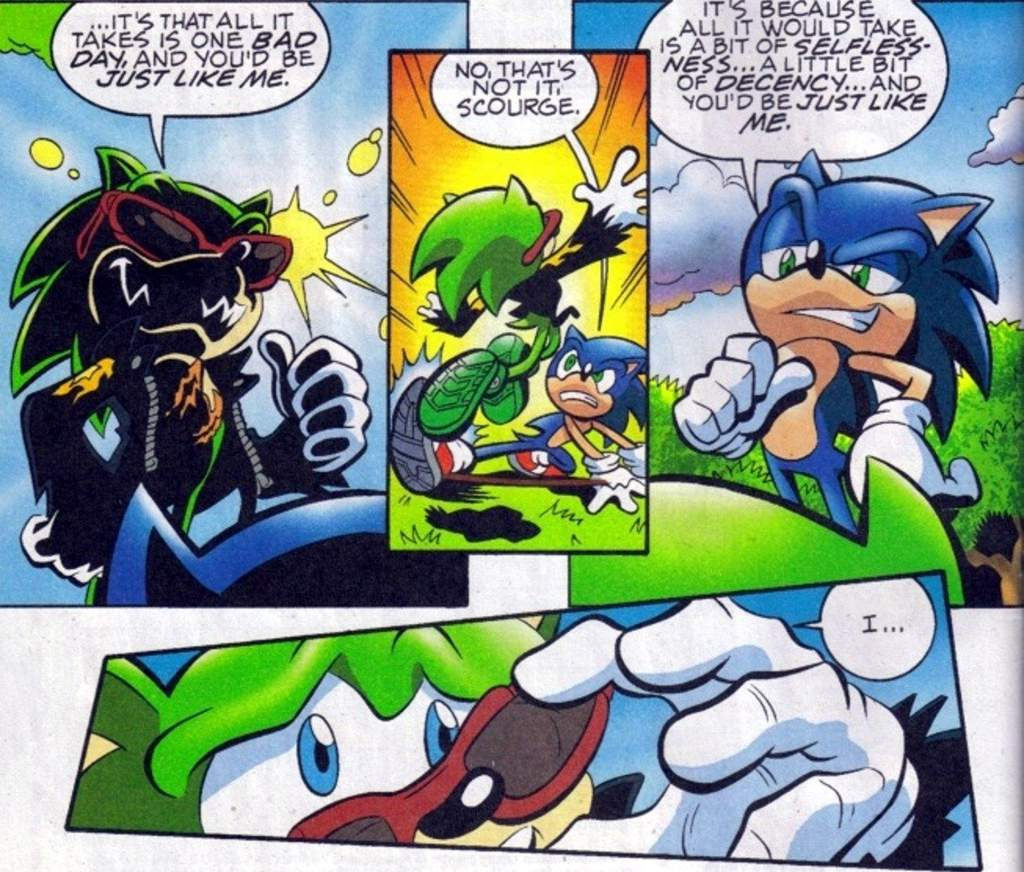This article is a web original.
Marco Cian (Hyogo)
I love the concept of the Evil Counterpart. The Evil Foil, Evil Twin, Evil Knockoff, Evil Doppelgänger, Evil Clone, Evil Mirror Image, whatever you wish to call it, I absolutely love the idea of an antagonist who is just like the hero, save for one small, crucial difference. So much so, it’s easily my second-favorite trope of all time.¹ But not everyone shares my enthusiasm for this idea.
There are some who sneer at the Evil Counterpart. They call it lazy (bah!), uncreative (boo!), a shoddy attempt at crafting a villain just by swapping the hero’s color palette and making them nastier (blech!). But I couldn’t disagree more. Far from being lazy and uncreative, I think the Evil Counterpart is the perfect way to not simply make a great villain, but to heighten the greatness of the hero they are a counterpart to.
Freud once discussed the narcissism of small differences; essentially, it’s not our opposites that we hate most, but the people who only differ from us in small but crucial ways. The narrowest differences are often the deepest, because in wild differences we see only alienness, but in minor differences we see the possibility of our own futures. The Evil Counterpart is that narcissism made manifest, not simply providing an antagonistic force but a warning to the hero, the sort of villain who can get under our hero’s skin in a personal way.
Why do I love this trope so much? Well, honestly, it’s because of Sonic the Hedgehog. That may seem like a strange answer, but when it comes to Evil Counterparts, no-one does it better than the Sonic franchise. Sonic’s characterization is fairly simple: he’s blue, fast, and way past cool. Various creators have given him various backgrounds and motivations over the years, but really, he doesn’t need those, because he’s less a character and more an icon. It makes sense then that a whole score of Sonic foils would have popped up over the years, because those three characteristics lend themselves to a plethora of interpretations, and a plethora of variations.
In this article then, I’d like to examine seven Evil Counterparts of Sonic the Hedgehog, to explore why they work so well, and exhibit aspects of the trope that can aid anyone curious about using the Evil Counterpart for their own work. So, let’s get started!
Let’s start with the most controversial choice. If you have even a passing notion of the Sonic franchise, I’m sure the idea of Knuckles as an Evil Counterpart to Sonic is simply baffling. I mean, he’s not evil! He’s not even a villain! He and Sonic are bros, not enemies. Except that’s not how things started out.
While different media has different details on the exact circumstances of their first meeting, what is consistent across multiple retellings is the fact that when Sonic first met Knuckles, the red echidna was an antagonist. Sure, it turned out that he was being manipulated by Dr. Robotnik, and once that misunderstanding was cleared up, the two spiny dudes became fast friends. But Knuckles predates all the other examples on this list, and provides the template they all would play with.
Instead of being blue, fast, and way past cool, Knuckles is red, strong, and sternly serious. While Sonic loves the limelight, Knuckles prefers his own company. While Sonic is unburdened by rules and laws, Knuckles takes his duties as Guardian very seriously. And even though they’re both spiny creatures, they’re different species, unlike all the other examples on this list.
Sonic and Knuckles may be friends now, but even in this friendship there is a powerful rivalry between the two, which illustrates the unique flavor of their contrast. They’re polar opposites, so much so that they can’t help but fight when they first meet. But Knuckles is not so much an Evil Counterpart as an antagonistic one. Even if they’re wildly different personalities, they remain committed to the same goals, to the point where even if the two fight, they can’t help but respect each other. They represent the narcissism of small differences being overcome, if not fully erased. In essence, Knuckles is the Piccolo to Sonic’s Goku.
So of course, if we bring up Piccolo, we have to mention Vegeta. Again, Shadow is no longer evil. Even if Shadow is not a friend like Knuckles, he can be counted on as an ally when the chips are down. But the difference between him and Sonic is of a different quality to that of Sonic and Knuckles, and illustrates a different type of contrast.
Shadow is an anti-hero, in both the classical and modern sense, just as Sonic is a hero in both senses. Like a modern hero, Sonic is typically portrayed as being on the side of justice and valor. However, like a classical hero, this isn’t really necessary to his characterization. Even if being a freedom fighter makes him more palatable to a modern audience, Sonic’s ultimate motivation is to have fun and adventure, and he has the power to do just that.
Shadow struggles, however, not simply with his power, but with his purpose. Shadow is the ultimate lifeform, far more powerful than Sonic or most people in the universe. But he can’t control that power. He needs inhibitor rings just to keep himself in check. And while Sonic is content to do whatever he pleases, Shadow has no idea what to do on his own. He needs outside control of some kind, both for his power and his purpose.
This makes him a different antagonist than Knuckles, because while Knuckles is redeemed upon learning the truth of Dr. Robotnik, Shadow doesn’t necessarily care what the goal of his master is, so long as that master gives him a sense of purpose. Even in his initial redemption, Shadow doesn’t really learn to think for himself, but instead replaces one master for another, replacing Robotnik’s orders with Maria’s wishes. And even after saving the world, Shadow is more than capable of destroying it immediately afterwards, depending on whom he chooses to give him purpose.
This is the central difference between the two characters, more than a simple palette swap, but a fundamental difference in temperament. Unlike Sonic, Shadow isn’t way past cool. He can’t shrug off the haters and stick to his guns, because he needs some form of validation. He may be black, brooding, and badass, but he wears his heart on his sleeve and struggles to find his own identity. In the end, Shadow wants a purpose, and his character is at its best when it showcases this struggle to achieve what Sonic possesses so effortlessly.
“Okay,” I hear you saying. “Now you’re just getting ridiculous.” Don’t worry, the next fellas will all be genuinely evil. Promise. What makes Silver a good antagonistic foil though is that, while Shadow is the perfect anti-hero, Silver is the perfect anti-villain. Unlike Shadow, Silver isn’t brooding and moody, but unlike Sonic, he can’t keep his emotions in check. Silver isn’t way past cool. He’s a dork. I mean, just look at him.
But this is what makes him such a dangerous antagonist. Like Knuckles, his initial antagonism towards Sonic stems from a misunderstanding. However, while Knuckles is more than willing to learn the error of his ways, Silver doubles down when confronted with his possible error. Like Sonic, he is heroic but also impulsive. He makes snap decisions and then sticks to them, but the crucial difference is that the narrative allows him to be wrong.
This is what makes Silver such a great foil. He is what Sonic’s heroic qualities could lead to if the narrative did not keep his actions justified. Think about it, oftentimes heroes and protagonists can make some questionable decisions to reach their goals, but the narrative will usually make sure that they were either wholly justified in the end or at least sympathetic in their mistakes. But Silver keeps causing trouble in his desperation to fix his timeline, and the same impulsiveness that lets Sonic make snap decisions convinces Silver to fight Sonic and his friends, despite this decision being made largely from a hunch. Even after learning the error of his ways and becoming an ally to Sonic and his friends, Silver still struggles to keep this impulsiveness in check. But we still love him, because I mean, just look at him. He’s a loveable dork.
Alright, now we’ve reached the good stuff. When you think the Evil Counterpart of Sonic the Hedgehog, chances are this was the first guy to pop in your head. He’s been around for many years through a plethora of media, storylines, and characterizations. But this variety actually makes him somewhat difficult to cover in full. If I spent the time needed to talk about every iteration of Metal Sonic that has popped up over the years, I’d have a list just as long as this one, if not longer. So for the sake of brevity, I’ll limit myself to two of his more notable appearances.
The first is Hyper Metal Sonic from Sonic the Hedgehog: The Movie. This is a perfect summation of the basic qualities that make Metal tick, as it were. Metal is constructed by Dr. Robotnik as the ultimate Badnik, the perfect robot soldier in Robotnik’s arsenal designed specifically to take Sonic down. But there’s one problem, one flaw in Metal’s design.
 Sonic is fast. More than that, he’s the fastest thing alive. And he’s always pushing his limits, passing every boundary to reach new speeds. But machines have built-in limitations. That’s why Sonic beat Metal in his very first appearance in Sonic CD. Sonic can grow and evolve, but Metal can’t.²
Sonic is fast. More than that, he’s the fastest thing alive. And he’s always pushing his limits, passing every boundary to reach new speeds. But machines have built-in limitations. That’s why Sonic beat Metal in his very first appearance in Sonic CD. Sonic can grow and evolve, but Metal can’t.²
So in Sonic the Hedgehog: The Movie, Robotnik tricks Sonic into encoding Metal with his life data, thus giving Metal the potential to transcend his original limits and take down Sonic once and for all. This is the central conflict that has been revisited and reexamined with each appearance of Metal Sonic. If Metal can’t grow or evolve like Sonic, then he has two options.
The first is to find a different way to transcend himself, like in the Sonic movie, which leads to an ironic ending when Sonic’s life data actually causes his heroism to rub off on Metal. The qualities that allow Metal to transcend his limits make him willingly sacrifice his life to save the world, just like Sonic would.
But the second is to double down. These limits are not a flaw, but what makes Metal better than Sonic. Instead of trying to reach Sonic’s level, the world must be reshaped to suit Metal’s level. And no version of Metal Sonic illustrates this option better than the Brotherhood of Metallix.
 The Brotherhood is a creation of the Fleetway Sonic the Comic, where Robotnik makes a whole army of Metal Sonics led by an emperor. Naturally this wasn’t a good idea, as the Metallix soon betray him and set about enacting their own plans, namely, conquering the world, purging it of all organic life, and reshaping it for their own ends.
The Brotherhood is a creation of the Fleetway Sonic the Comic, where Robotnik makes a whole army of Metal Sonics led by an emperor. Naturally this wasn’t a good idea, as the Metallix soon betray him and set about enacting their own plans, namely, conquering the world, purging it of all organic life, and reshaping it for their own ends.
If that sounds like a rip-off of the Daleks or Cyberman, you’re not too far off. But this similarity actually illustrates another fundamental difference between Sonic and his Metal counterpart. Sonic is brash, anti-authoritarian, and in some versions an agent of Chaos. Metal though is cold, calculating, and an agent of Order. Metal is meant to be the ultimate Badnik, after all, the perfect negative of Sonic. To destroy any traces of individuality, any hints of disorder, and shape the universe in Sonic’s image while doing so, is the ultimate perversion of Sonic’s heroism, a low not even Robotnik could reach. Of course, no conversation about Evil Counterparts and Sonic the Comic is complete without mentioning…
This is the best part of being a Sonic fan: any detail in the franchise, no matter how small or insignificant, will inevitably find its way in the hands of a creator who will turn it into something unique and amazing. And the Fleetway Super Sonic is a perfect example of this.
In Sonic the Comic, Super Sonic is not simply Sonic in a superpowered state, but another entity entirely, unleashed whenever Sonic is exposed to too much Chaos energy. And he is absolutely terrifying. He cannot be reasoned with, imprisoned, or defeated in any way, because his power is limitless and his desire is solely to avoid boredom. It doesn’t matter how many things he has to break, people he has to kill, or worlds he has to destroy. So long as it amuses him, he’ll do anything, and the only way to survive his wrath is to live long enough for him to burn out and revert to the original Sonic.
Some might compare Super Sonic to the Hulk, but I think a better choice would be the Dark Phoenix, because while the Hulk just wants to be left alone, Super Sonic is primordial chaos run rampant. Like I said, Sonic is chaotic, but Super Sonic takes this chaoticness and extends it to its most horrifying conclusion. And while Sonic is way past cool, he maintains control over his emotions and power. Super Sonic then is Sonic’s deepest fear made manifest, all his worst qualities taken to the maximum with no control whatsoever. Of course, he’s still not quite as frightening as
Now, I know what you’re thinking. “Wait, how can Sonic be an Evil Counterpart to Sonic? That doesn’t make any sense.” But the thing is, in the Shogakukan Sonic the Hedgehog manga, Sonic is an Evil Counterpart… to Nicky the Hedgehog.
 Let me explain. In the manga, Nicky the Hedgehog is a shy, nebbishy youth who longs to be as strong as his dad and to win the heart of his love Amy Rose (yes, this was Amy’s introduction to Sonic lore). But Nicky is too timid and meek to make these dreams a reality. However, when in situations of great stress, Nicky can transform into Sonic the Hedgehog, an unstoppable, all-powerful rogue who seeks vengeance upon all those who wrong Nicky.
Let me explain. In the manga, Nicky the Hedgehog is a shy, nebbishy youth who longs to be as strong as his dad and to win the heart of his love Amy Rose (yes, this was Amy’s introduction to Sonic lore). But Nicky is too timid and meek to make these dreams a reality. However, when in situations of great stress, Nicky can transform into Sonic the Hedgehog, an unstoppable, all-powerful rogue who seeks vengeance upon all those who wrong Nicky.
“Frena la mula!” quethe ye. “In’t this an awful lot like that Paperinik?” And the resemblance is striking. However, while Paperinik slowly morphed into a hero, the Shogakukan Sonic has no such ambitions, being content to merely humiliate and ruin anyone who bullies Nicky. Even when confronting Robotnik, this Sonic does it not out of a sense of heroism so much as an annoyance at the doctor’s various attempts to imprison him.
 Now, if the manga made some sort of commentary on this, or made the narrative highlight the more negative aspects of this revenge fantasy, that would be one thing. But what makes the Shogakukan manga so fascinating, and the Shogakukan Sonic so horrifying, is that this is all presented as perfectly reasonable and justified. Sonic is seen as a hero precisely because he crushes anyone who opposes him. The bystanders of the town all adore Sonic, and Amy loves him far more than she’ll ever love Nicky, because he ruthlessly destroys anyone who tells him no or lays their hands on him.
Now, if the manga made some sort of commentary on this, or made the narrative highlight the more negative aspects of this revenge fantasy, that would be one thing. But what makes the Shogakukan manga so fascinating, and the Shogakukan Sonic so horrifying, is that this is all presented as perfectly reasonable and justified. Sonic is seen as a hero precisely because he crushes anyone who opposes him. The bystanders of the town all adore Sonic, and Amy loves him far more than she’ll ever love Nicky, because he ruthlessly destroys anyone who tells him no or lays their hands on him.
When you take into account that this comic is meant for younger readers this setup makes perfect sense. Let’s be honest, we’re all nerds here. We’ve all experienced humiliating bullying in our childhoods, and while we’d never admit it publicly, when these incidents happened, we would entertain passionate, violent revenge fantasies against our oppressors. Part of growing up was learning to let go of this thirst for vengeance.
But instead of encouraging kids to put aside such thoughts of revenge, the Shogakukan Sonic presents this revenge as glorious and righteous. Yes, anyone who wrongs you does deserve to be completely and utterly destroyed, in the most humiliating way possible. It’s exactly the sort of narrative young kids LOVE, and what makes the Shogakukan Sonic an even more horrifying double than Super Sonic. While Super Sonic is a primal force, the Shogakukan Sonic is a conscious manifestation of Nicky’s desires. He knows exactly what he is doing, and he doesn’t care, because why should he when he’s so clearly in the right?
The one. The only. The best. Hail to the king, baby, it’s Scourge the Hedgehog. Of all the Evil Counterparts on this list, Scourge is far and away my favorite. But to explain why he works so well, I need to briefly mention two of his predecessors, to drive home how they failed where he succeeded.
 The first is Archie Comics’ Anti-Sonic, who is, quite frankly, a loser.³ A generous interpretation is that this is rather the point. While Sonic is way past cool, Anti-Sonic is someone who thinks he’s cool but very clearly isn’t. He’s nothing more than a cheap knockoff of Sonic, whose idea of evil is that you wear leather jackets and sunglasses and try to bone all your counterpart’s lady friends.
The first is Archie Comics’ Anti-Sonic, who is, quite frankly, a loser.³ A generous interpretation is that this is rather the point. While Sonic is way past cool, Anti-Sonic is someone who thinks he’s cool but very clearly isn’t. He’s nothing more than a cheap knockoff of Sonic, whose idea of evil is that you wear leather jackets and sunglasses and try to bone all your counterpart’s lady friends.
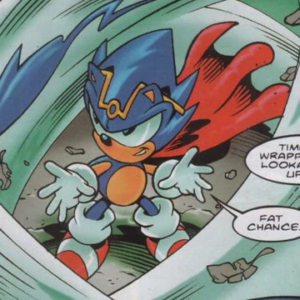 The second is Fleetway Comics’ King Sonic, who is an evil version of Sonic from a parallel timeline where the accident that turned the good Dr. Kintobor into the evil Dr. Robotnik transformed Sonic instead, and he rules his timeline with an iron fist. He’s more interesting than Anti-Sonic, but he still has a fatal characterization flaw, namely that the thing which made him turn evil was an outside force. Without the transformational accident, Sonic never would have turned into King Sonic, so there’s no real threat of Sonic becoming like this alternate version of himself because said accident didn’t happen.
The second is Fleetway Comics’ King Sonic, who is an evil version of Sonic from a parallel timeline where the accident that turned the good Dr. Kintobor into the evil Dr. Robotnik transformed Sonic instead, and he rules his timeline with an iron fist. He’s more interesting than Anti-Sonic, but he still has a fatal characterization flaw, namely that the thing which made him turn evil was an outside force. Without the transformational accident, Sonic never would have turned into King Sonic, so there’s no real threat of Sonic becoming like this alternate version of himself because said accident didn’t happen.
Scourge is different though. After leeching off the Master Emerald and being wounded by Knuckles’ father, Anti-Sonic’s appearance changes, now having fangs, a scar on his chest, and a reversed color scheme to Sonic. More than that, though, he starts to recognize and exploit the parallels between himself and Sonic, leading to what can only be described as a formative moment of my childhood.
Some might sneer at this exchange as a cheap ripoff of the Joker’s Killing Joke speech. But there’s actually a crucial, key difference, and it’s the difference that makes the Evil Counterpart such a compelling trope. In The Killing Joke, Joker says “All it takes is one bad day to reduce the sanest man alive to lunacy.” And that’s the thing about the Joker. He wants to break Batman. He is a manifestation of crime’s evolution after Batman enters Gotham. He wants to break Batman because if he does, it means Batman will have failed in his promise to end all crime forever. But Joker has no desire to turn Batman into another Joker. He simply wants to break him.
Scourge, though, wants to prove that under the right circumstances, Sonic will turn out just like him. Evil Counterparts aren’t the manifestation of some abstract concept like crime so much as the manifestation of what the hero could be. And it goes both ways. Just as Scourge is what Sonic could be, Sonic is what Scourge could be. The fear that Scourge shows when confronted with this fact is what drives him to destroy Sonic, and what gnaws at Sonic even as he refuses to take his doppelgänger’s life. That’s why the enmity between the two is so personal, so visceral, the narcissism of small differences.
Not every Evil Counterpart of Sonic works. But when they do, I think they work spectacularly. And considering the sheer number of Evil Counterparts Sonic has accumulated over the years, I think anyone who wants to use any variation of this trope in their own work can look to the Sonic franchise as a template for the kind of stories they want to tell.
Footnotes
- For context, my favorite trope of all time is when a character wants something, they go on their adventure to obtain this thing, and then when they are given a chance to take the thing, they willingly give it up because of how the adventure has changed them. I don’t know if TV Tropes has a name for this, but if not, I propose the name “Jack and the Tower.”
- Strange, isn’t it?
- And whose creator ought to be Minister for Home Affairs, given his creative output as of late.







